The defeat of a Scottish army at the 1650 Battle of Dunbar was just the beginning of an epic ordeal for the survivors.

On September 3, 1650, between Doon Hill and the London Road in Dunbar, Scotland, the English Parliamentary army led by Oliver Cromwell battled the Scottish Covenanting army. By this time, the series of conflicts known as the English Civil Wars had raged, off and on, for eight years. At the outset, Cromwell and the Scots had been on the same side, opposed to the royalists who backed King Charles I. The king had been beheaded the previous year, and now the Scots were supporting the royal claim of his son, Charles II.
The Scots are thought to have had as much as a two-to-one advantage in men, and held a superior position on the hill. However, many of the Scots were novices who had been recruited over the summer to replace more experienced soldiers purged from the army for their dissenting political views. When the Scots set out to attack at first light, Cromwell’s forces pounced and made quick work of them. The Battle of Dunbar was over in an hour, with the Scots suffering the overwhelming majority of casualties.
“I imagine it was quite chaotic. Cromwell’s men were trained professionals, and the Scots weren’t in good condition when they went into that battle,” says Chris Gerrard, an archaeologist at the University of Durham. “They had been at war for many years, and the clans were tired of giving up their best to the army. It was just men against boys.”
Denne historien er fra May/June 2017-utgaven av Archaeology.
Start din 7-dagers gratis prøveperiode på Magzter GOLD for å få tilgang til tusenvis av utvalgte premiumhistorier og 9000+ magasiner og aviser.
Allerede abonnent ? Logg på
Denne historien er fra May/June 2017-utgaven av Archaeology.
Start din 7-dagers gratis prøveperiode på Magzter GOLD for å få tilgang til tusenvis av utvalgte premiumhistorier og 9000+ magasiner og aviser.
Allerede abonnent? Logg på

ORIGINS OF PERUVIAN RELIGION
While investigating looters' holes at the site of La Otra Banda in northern Peru's Zaña Valley, archaeologist Luis A. Muro Ynoñán of the Field Museum and the Pontifical Catholic University of Peru spotted carved blocks around seven feet below the surface.

ISLAND OF FREEDOM
Many of the enslaved Africans sent to Brazil beginning in 1549 were from what is now Angola, where one of the most widely spoken languages was Kimbundu.
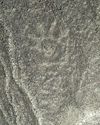
NAZCA GHOST GLYPHS
From the 1940s to the early 2000s, geoglyphs were discovered in the Nazca Desert of southern Peru depicting animals, humans, and other figures at the rate of 1.5 per year.

COLONIAL COMPANIONS
The ancestry of dogs in seventeenth-century Jamestown offers a window into social dynamics between Indigenous people and early colonists.
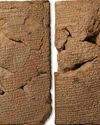
BAD MOON RISING
The British Museum houses around 130,000 clay tablets from ancient Mesopotamia written in cuneiform script between 3200 B.C. and the first century A.D.
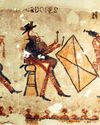
DANCING DAYS OF THE MAYA
In the mountains of Guatemala, murals depict elaborate performances combining Catholic and Indigenous traditions
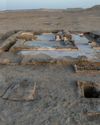
LOST GREEK TRAGEDIES REVIVED
How a scholar discovered passages from a great Athenian playwright on a discarded papyrus

Medieval England's Coveted Cargo
Archaeologists dive on a ship laden with marble bound for the kingdom's grandest cathedrals
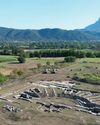
Unearthing a Forgotten Roman Town
A stretch of Italian farmland concealed one of the small cities that powered the empire
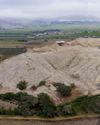
TOP 10 DISCOVERIES OF 2024
ARCHAEOLOGY magazine reveals the year's most exciting finds